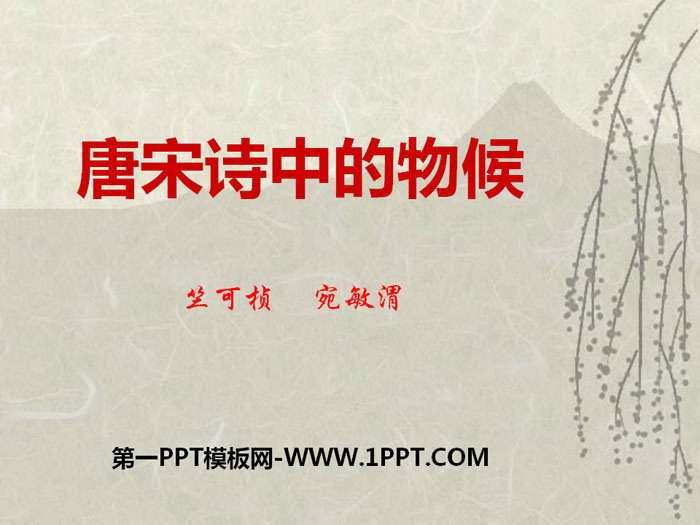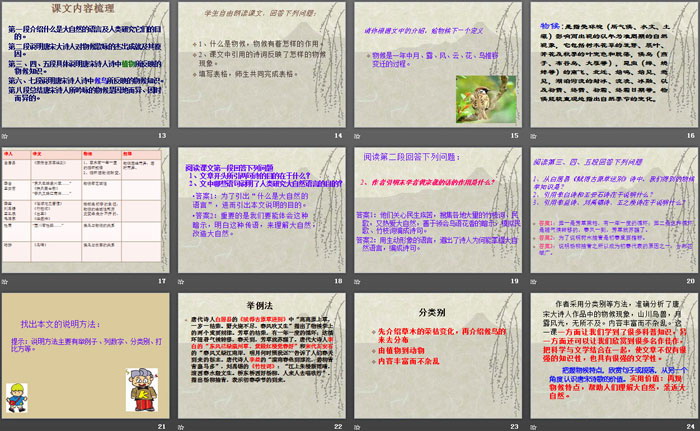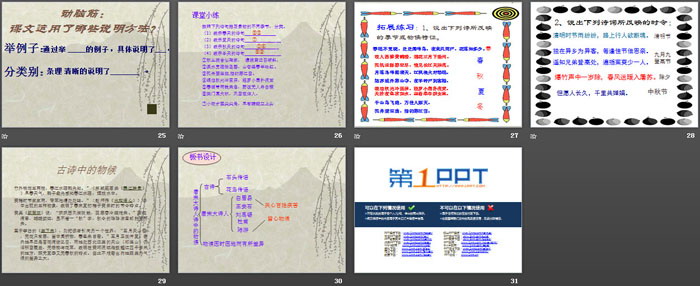The second volume of first-grade Chinese compiled by the People's Education Publishing House
The second volume of fifth-grade Chinese compiled by the People's Education Publishing House
The first volume of Chinese language for eighth grade compiled by the People's Education Publishing House
The first volume of first-grade Chinese compiled by the People's Education Publishing House
The first volume of fourth-grade Chinese compiled by the People's Education Publishing House
The first volume of ninth-grade Chinese compiled by the People's Education Publishing House
The first volume of Chinese language for sixth grade compiled by the People's Education Publishing House
The first volume of second-grade Chinese compiled by the People's Education Publishing House
The second volume of Chinese language for eighth grade compiled by the People's Education Publishing House
The second volume of fourth-grade Chinese compiled by the People's Education Publishing House
Hunan Education Edition Third Grade Chinese Language Volume 1
The second volume of seventh-grade Chinese compiled by the People's Education Publishing House
The first volume of Chinese language for fifth grade compiled by the People's Education Publishing House
The second volume of Chinese language for sixth grade compiled by the People's Education Publishing House
Western Normal University Edition Third Grade Chinese Language Volume 1
The first volume of third-grade Chinese compiled by the People's Education Publishing House

| Category | Format | Size |
|---|---|---|
| E-education edition seventh grade Chinese language volume 1 | pptx | 6 MB |
Description
"Phenology in Tang and Song Poems" PPT
Part One: Introduction of New Course
Goal 1: Understand the relationship between literature and nature by studying this article.
Goal 2: Learn to use examples and classifications to explain things in this article.
Goal 3: Be inspired by aesthetics by appreciating the poems of great poets of the Tang and Song Dynasties, and learn phenological knowledge at the same time
Zhu Kezhen (1890-1974), courtesy name Oufang, was born in Shaoxing, Zhejiang. Chinese meteorologist, geographer and educator, one of the founders of modern meteorological undertakings in China. Contributed to the establishment and development of modern meteorology and geography in China. In terms of studying the formation, characteristics, divisions and changes of China's climate, he has written many papers on phenology and the history of natural science, and has also done research on typhoons and storms. In his research work, he paid attention to combining the actual production and serving agriculture. He wrote "Collected Works of Zhu Kezhen" and "Diary of Zhu Kezhen".
PPT on phenology in Tang and Song poetry, part 2 content: expository style knowledge:
1. The order of explanation
Temporal order, spatial order, logical order
2. Common explanation methods include: giving examples, classifying, defining, making comparisons, making analogies, listing numbers, listing charts, and describing situations.
Explain what the method does:
This sentence uses the _______ explanation method to ____ the ____ characteristics of things.
3. Language analysis of expository texts
Generally speaking, we talk about it from two angles: A. Accurate; B. Vivid or concise.
PPT on phenology in poetry of the Tang and Song Dynasties, the third part: clarify the ideas of the article and perceive the content of the article as a whole.
(Use dots to outline the main information of the article, and integrate the main meaning of each paragraph.)
Text structure level
Paragraphs 1 and 2 introduce the content and purpose of the explanation.
Paragraphs 3---7 explain in detail the phenological phenomena in the poems of great poets of the Tang and Song Dynasties.
Write about plants in paragraphs 3, 4, and 5, and animals in paragraphs 6 and 7.
Paragraph 8: Supplementary explanation that phenology varies from place to place and from time to time.
Sorting out the text content
The first paragraph introduces what the languages of nature are and the purpose of human beings studying them.
The second paragraph explains the outstanding achievements and reasons of the great poets of the Tang and Song Dynasties in singing about phenology.
The third, fourth and fifth paragraphs specifically explain the phenological knowledge reflected in the plants in the poems of Tang and Song poets.
The sixth and seventh paragraphs explain the phenological knowledge reflected in the migratory birds in the poems of Tang and Song poets.
The eighth paragraph summarizes that the phenology sung by poets of the Tang and Song Dynasties varies from place to place and from time to time.
PPT on Phenology in Tang and Song Poems, Part 4: Reading Q&A
Read the first paragraph of the text and answer the following questions
1. What is the purpose of the two lines of poetry quoted at the beginning of the article?
2. Which sentences in the article illustrate the purpose of human beings studying the language of nature?
Answer 1: In order to elicit "what is the language of nature", and then lead to the purpose of this article.
Answer 2: It is important that we can understand this hint and understand this message to understand nature and transform it.
Read the second paragraph and answer the following questions:
2. What is the purpose of the author quoting the words of Huang Zongxi, a scholar in the late Ming Dynasty?
Answer 1: They care about the people's livelihood and have collected a large number of bamboo poems and folk songs from various places. They also love nature and are good at understanding the hints of birds singing and the fragrance of flowers, and they imitate folk songs and bamboo poems to compile poems.
Answer 2: Using vivid and vivid language, it tells why the poet can master the language of nature and compile poems.
Read the third, fourth and fifth paragraphs and answer the following questions
1. What phenological knowledge can we get from Bai Juyi's poem "Farewell to the Ancient Grassland"?
2. What does quoting Li Bai’s poems and Wang Anshi’s poems mean?
3. What does quoting Li Yi’s poems, Liu Yuxi’s poems, and Wang Zhihuan’s poems mean?
Answer 1: The first is that the grass grows and dies, and there is an annual cycle; the second is that this cycle changes with the climate. When the spring breeze arrives, the grass wakes up.
Answer 2: To illustrate that the greening of trees is an important indicator of early spring.
Answer 3: Explain one of the reasons why willows become the representative of early spring: they are widely distributed.
PPT on Phenology in Tang and Song Poems, Part 5: Find out how to explain this article:
Tips: The main explanation methods include giving examples, listing numbers, classifying, making analogies, etc.
Example method
Bai Juyi, a poet of the Tang Dynasty, pointed out two important laws in phenology in his "Farewell to the Ancient Grassland": "The grass grows in the original grassland, and it dries up every year. Wildfires cannot burn it out, but the spring breeze blows it again." There is an annual cycle of the withering and blooming of fragrant grass; this cycle changes with the climate. When spring comes, the fragrant grass wakes up. Li Bai, the great poet of the Tang Dynasty, wrote "The grass in Yingzhou is green in the east wind, and I feel good about the spring in the purple palace and red building." and "The spring breeze is green again on the south bank of the river, when will the bright moon shine on me again?" by Wang Anshi in the Song Dynasty, telling people the signs of the arrival of spring. Li Yi, a poet of the Tang Dynasty, wrote "The spring scenery of Monan reaches Hutuo, and there are many green willows and green horses", and Liu Yuxi's "Bamboo Branch Poems": "The new rain is clear in the Zhulou on the river, and the spring water rolling to the west is full of life. There are good willows in the east and west of the bridge, and people come and go. "Go and sing", pointing out that the willows will draw green, indicating the arrival of early spring.
Category
First introduce the changes in the growth and decline of vegetation, and then introduce the coming and going distribution of migratory birds.
from plants to animals
Rich in content but not cluttered
PPT on Phenology in Tang and Song Poems, Part Six: Classroom Practice
Classify the scenery according to the different seasons described in the following poems.
(1) Verses expressing spring______________
(2) Poems expressing summer____________________
(3) Verses expressing autumn_______________
(4) Verses expressing winter____________________
① The autumn bushes surround the house like Tao's house, and the fence is gradually sloping around.
②The stream feels warm and slightly green, and the apricots turn red in the middle of spring.
③ A man with a coir rain hat fishing alone in a boat, fishing in the snow in the cold river.
④The autumn light of silver candles paints the screen coldly, and the small light fan flutters at the flowing fireflies.
⑤The spring tide brings rain late in the day, and there is no boat crossing the wild river.
⑥ Chaimen hears dogs barking, and people return home on a snowy night.
⑦The little lotus has just revealed its sharp corners, and a dragonfly has already stood on it.
PPT on Phenology in Tang and Song Poems, Part 7: Expansion Exercises:
1. Name the seasonal or phenological characteristics reflected in the following poems.
When I sleep in spring, I don't realize the dawn, and I can hear the singing of birds everywhere. The night comes wind and rain, Whispering Colour.
The old friend left the Yellow Crane Tower in the west, and the fireworks descended from Yangzhou in March.
The shadow of the lone sail in the distance is gone in the blue sky, and only the Yangtze River can be seen flowing in the sky.
The moon is setting, crows are crying, and the sky is filled with frost. Jiang Feng, fishing fire, is facing melancholy.
At Hanshan Temple outside Gusu City, the bell rang for the passenger ship at midnight.
The autumn light of the silver candle paints the screen coldly, and the light fan flutters at the flowing fireflies.
The sky is as cold as water at night, and I sit and watch Altair and Vega.
Birds in thousands of mountains have disappeared, and all traces of people have been wiped out.
Boat PC World Weng, fishing alone trees and snow.
2. Name the seasons reflected in the following poems:
It rains heavily during the Qingming Festival, and pedestrians on the road feel like they are dying.
Being a stranger in a foreign land, I miss my family even more during the festive season.
I know from afar that when my brothers climbed to a high place, there was only one less person planting dogwood trees.
The sound of firecrackers marks the end of the year, and the spring breeze brings warmth to Tusu.
Nung, moon and new moon.
PPT on Phenology in Tang and Song Poems, Part 8: Phenology in Ancient Poems
There are two or three branches of peach blossoms outside the bamboo, which are prophets of the warmth of the spring river. "(Su Shi wrote Huichong's "Evening Scene on the Spring River") In the early spring weather, ducks are the first to sense the warmth of the spring river and play in the water.
During the yellow plum season, it rains everywhere, and frogs are everywhere in the grassy ponds. "(Zhao Shixiu's "The Water Threshold Reminds the Heart") The three objects appearing in the poem show the seasonal characteristics of the late spring and early summer when the plums are yellow and ripe.
Huang Chao's "Inscription on Chrysanthemums" said: "The whistling west wind fills the courtyard with plants, and the pistils are cold and fragrant, and it is difficult for butterflies to come." The chrysanthemums have withered and the butterflies have disappeared. Although there is no word "Autumn", the coolness of autumn is blowing on our faces.
As for Li Bai's "Song under the Sai", it leads readers to another world: "It is snowing in the mountains in May. There are no flowers, only cold. I hear the broken willows in the flute, but I have never seen the spring scenery." May is midsummer, and the flowers have already withered in the mainland. On that day, the Tianshan Mountains (Qilian Mountains) located in the northwest frontier were still covered with snow and there were no willows, flowers or grass. This shows that in the Yellow River Basin with an altitude of more than 4,000 meters, there is neither summer nor spring and autumn characteristics. From this, it is not difficult to see the huge difference in climate between the mainland and outside the Great Wall.
Keywords: Free download of the Chinese PPT courseware for the first volume of the seventh grade of the E-education edition, PPT download of phenology in Tang and Song poems, .PPT format;
For more information about the PPT courseware "Phenology in Tang and Song Poems", please click on the PPT tab of "Phenology in Tang and Song Poems".
File Info
Update Time: 2024-09-03
This template belongs to Chinese courseware E-education edition seventh grade Chinese language volume 1 industry PPT template
"Phenology in Tang and Song Poems" PPT Simple campus recruitment activity planning plan summary enterprise and institution recruitment publicity lecture PPT template is a general PPT template for business post competition provided by the manuscript PPT, simple campus recruitment activity planning plan summary enterprise and institution recruitment promotion Lecture PPT template, you can edit and modify the text and pictures in the source file by downloading the source file. If you want more exquisite business PPT templates, you can come to grid resource. Doug resource PPT, massive PPT template slide material download, we only make high-quality PPT templates!
Tips: If you open the template and feel that it is not suitable for all your needs, you can search for related content "Phenology in Tang and Song Poems" PPT is enough.
How to use the Windows system template
Directly decompress the file and use it with office or wps
How to use the Mac system template
Directly decompress the file and use it Office or wps can be used
Related reading
For more detailed PPT-related tutorials and font tutorials, you can view: Click to see
How to create a high-quality technological sense PPT? 4 ways to share the bottom of the box
Notice
Do not download in WeChat, Zhihu, QQ, built-in browsers, please use mobile browsers to download! If you are a mobile phone user, please download it on your computer!
1. The manuscript PPT is only for study and reference, please delete it 24 hours after downloading.
2. If the resource involves your legitimate rights and interests, delete it immediately.
3. Contact information: service@daogebangong.com
"Phenology in Tang and Song Poems" PPT, due to usage restrictions, it is only for personal study and reference use. For commercial use, please go to the relevant official website for authorization.
(Personal non-commercial use refers to the use of this font to complete the display of personal works, including but not limited to the design of personal papers, resumes, etc.)
Preview













